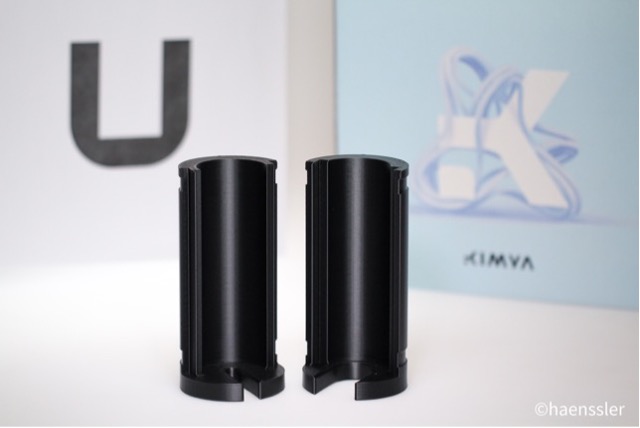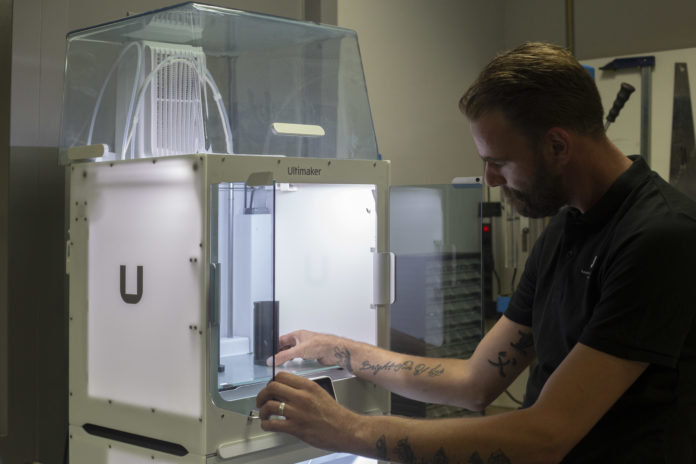You don’t need to be an electronics expert to know that (micro) components used in telecommunications, electronics or medical devices need to be protected against uncontrolled electrical discharges (ESD – Electro Static Discharge). Such protection is crucial for both the user and the component itself in that it avoids damaging electrostatic sensitive devices such as sensors or semiconductor circuits and preserves them from functional failures.
While 3D printing has already proven its capability to manufacture a wide range of components in the aforementioned fields, the choice of materials is of paramount importance here to achieve the desired anti-ESD properties.
Hänssler, a German group that specializes in sealing solutions and plastics technology, has been exploring the combination of Ultimaker and KIMYA technology solutions for the manufacture of sealant parts.
With the goal of producing 300 highly accurate sealant parts annually with anti-electrostatic properties, the company decided to use Kimya’s ABS-ESD on the Ultimaker S5.
As a reminder, ever since it has launched its additive manufacturing brand KIMYA, ARMOR Group has made a key focus on their ability to provide a 360° industrial solution to vertical industries.
A press communication explains that the challenge in such application is that surface defects impact ESD performance, which would inevitably alter the dissipation of charges. Therefore, Hänssler’s parts must be reproducible for both ESD behaviour and dimensional accuracy, in addition to meeting visual and integrity requirements. To assess the surface quality of the prints, engineers performed a high-resolution 3D scanning analysis on a select number of parts, using a GOM Atos Core 3D scanner. This showed relative deviations between the ideal CAD model and the printed part. A pass/no pass filter for dimensional accuracy with a threshold of 0.3mm, enabled Hänssler to create an optimized ABS-ESD printing profile to print parts on the Ultimaker S5 with minimal tolerance limits.
We know that the Kimya ABS-ESD filament developed by ARMOR delivers anti-electrostatic properties and can withstand temperatures above 194°F (90°C).

“Besides the opportunity to create accurate and more complex parts with 3D printing, we also reported a reduction in material waste in the range of -80% and -60% in cost per part versus our traditional milling techniques. The accessibility and reliability of 3D printing and great support of Ultimakers’ ecosystem partner Kimya, made this project just the beginning”, Adrian Heinrich, Marketing Manager at Hänssler states.
“Ensuring high dimensional accuracy with 3D printing is key for companies that need to guarantee their customers every batch is identical, and ESD safe. It should not matter when, where or who print the parts. I’m proud of the close collaboration between Kimya and Ultimaker to make this happen for the Hänssler Group”, Miguel Calvo, CTO at Ultimaker notes.
Remember, you can post job opportunities in the AM Industry on 3D ADEPT Media free of charge or look for a job via our job board. Make sure to follow us on our social networks and subscribe to our weekly newsletter : Facebook, Twitter, LinkedIn & Instagram ! If you want to be featured in the next issue of our digital magazine or if you hear a story that needs to be heard, make sure you send it to contact@3dadept.com






